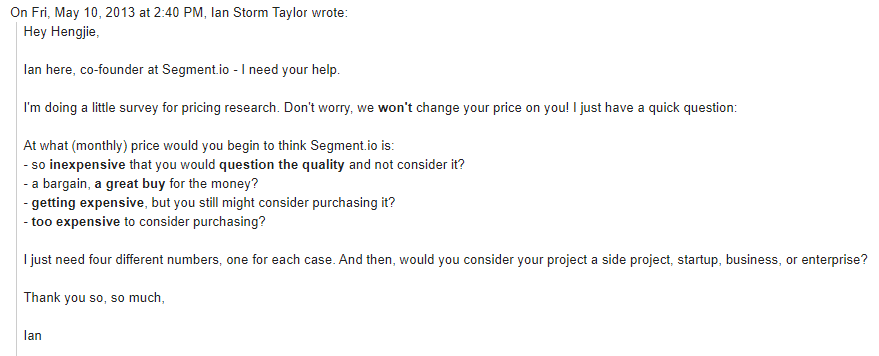This is a peek at this week’s 🔓 subscriber-only newsletter 🔓 If you’d like to read the full post you can become a subscriber, or enjoy the first part in this series for free.
Q: I loved your post about how B2B companies found their early users, but how did they turn these early users into paying customers?
“Frederic (my co-founder) and I personally sold them. Really it was looking then in the eye and getting them to trust us that it would work and be valuable. It was hard. A real grind in the beginning.”
— Todd McKinnon, CEO and co-founder of Okta
Once you’ve found your early users, how do you get them to pay? I’m dedicating this post to the strategies that today’s fastest-growing B2B businesses relied on to sell their first handful of customers. It turns out there are just three strategies early-on:
Bottom-up + self-service: Users discover your product, sign up for a free plan, love it, and upgrade themselves in order to get more functionality.
Bottom-up + inside sales: Users discover your product, sign up for a free plan, and then are either encouraged by a sales rep (or pro-actively reach out) to upgrade for more functionality.
Outbound sales: Founders or early sales hires reach out to leads, help them trial the product, and then sign them up for a paid plan.
Here’s how the companies I looked at map to these three strategies:
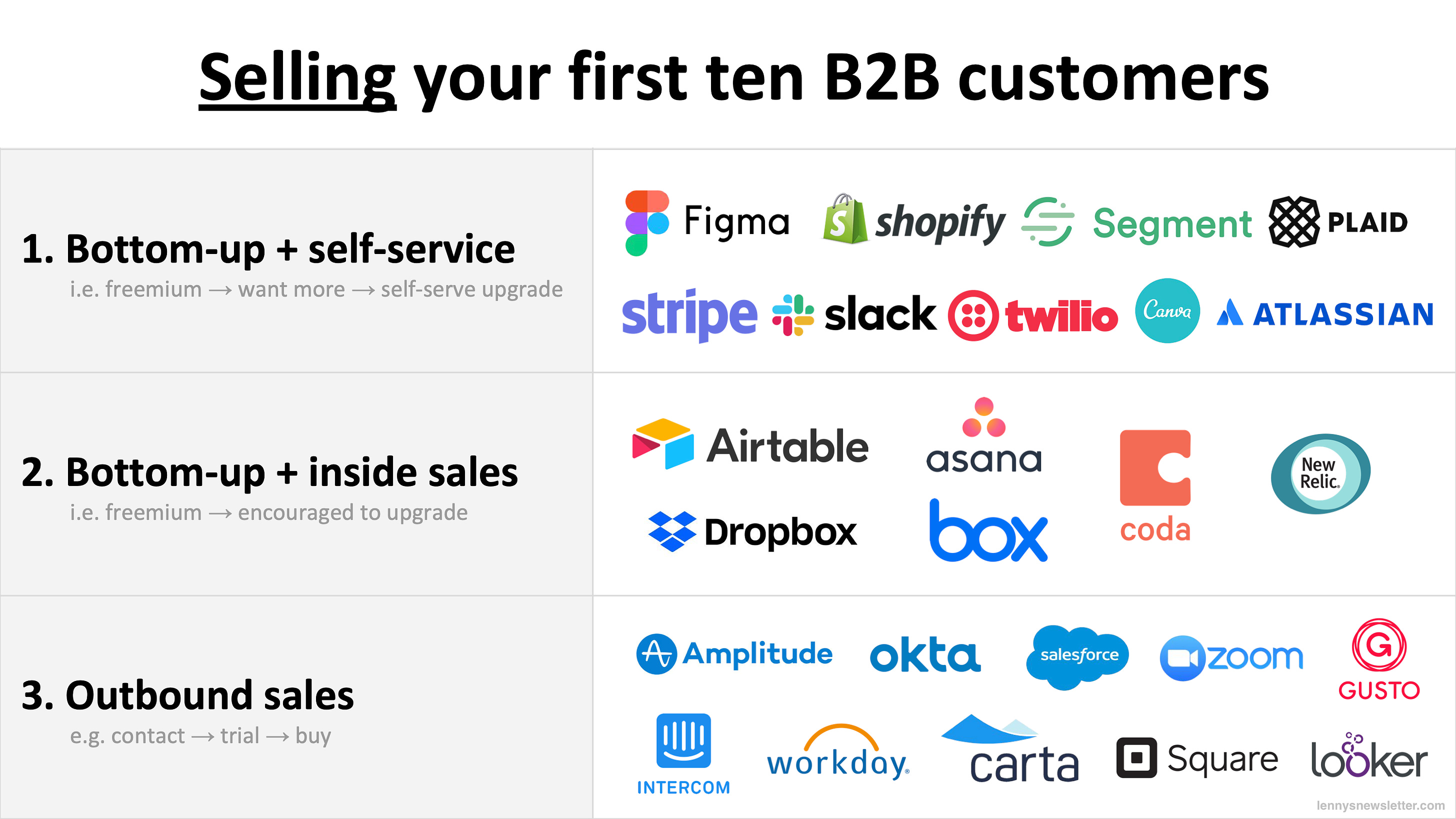 |
My biggest surprises and takeaways:
100% of companies ended up building a sales team, including every bottom-up driven business
Founder-led sales is how most companies kick-started growth
You don’t need to launch with a paid plan if you are going bottom-up. Seven of the twenty-five companies I looked at (including Segment, Figma, and Airtable) had no paid plans when they launched. They then worked with their power-users to figure out what the paid plans should be.
You can adjust your sales strategy down the road — Zoom and Amplitude started sales-driven and later became bottom-up-driven. Box and New Relic did the reverse.
Nearly company offered a free plan from the outset — usually a freemium tier, and occasionally a trial period.
There are four options for charging B2B users: a flat monthly fee, a per-seat monthly fee, a usage-based fee, or a transaction fee. Most of the companies I looked at charge a monthly per-seat fee, and sometimes include multiple changes (per-seat + flat monthly fee, or usage-based + flat monthly fee).
Sales-driven companies love blue logos
Let’s dive in!
1. Bottom-up + self-service
Segment
Initial strategy: Bottom-up, self-service
Eventual strategy: Bottom-up, alongside a sales team
How they charge today: Monthly flat-fee plus usage-based fee
Free tier: Freemium
“We initially launched with a free plan for the client-side only, then added pricing pages about a month later. We didn't actually build out a real self-service system and start charging users until something like nine months after launching. The first thing we were trying to do was nail product-market fit!
I think this helped us quite a bit. We first had to nail the onboarding experience and value users might get from the product before spending a bunch of time on building out the billing systems.
It also helped us when it came to understanding how to price the v1. We sent our users the Van Westendorp survey to get a good feel for what they thought was a fair price for Segment. It essentially gives you these 4 pricing curves, and you can plot out what makes sense for most of your users. This was the email we sent back in 2013...
In terms of getting early customers to pay, we worked with our enterprise customers to onboard them, but for the early users we made it all self-service. We sent out some sort of form or link to enter a card in Stripe, before turning it into a real self-service flow down the road.”
— Calvin French-Owen, CTO
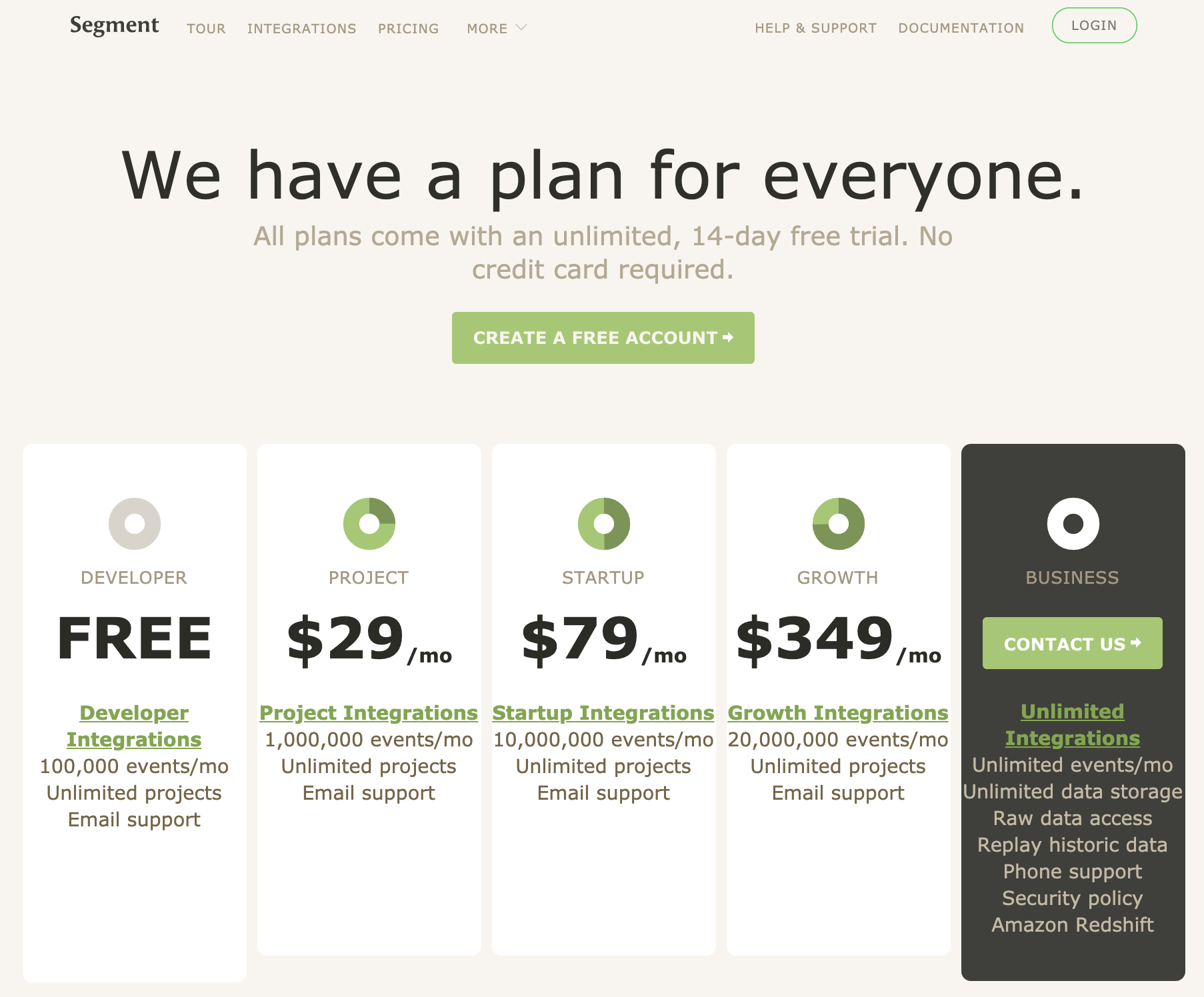 |
Figma
Initial strategy: Bottom-up, self-service
Eventual strategy: Bottom-up, alongside a sales team
How they charge today: Per-seat monthly subscription
Free tier: Freemium
“We initially started without any paid plans. Our thinking was that it'll spread faster if we don't charge. Eventually though, not paying became the barrier for companies to adopt it, so we started charging.
Timeline wise, we launched a closed beta in December 2015, general availability in October 2016, and we didn't charge until 2017. At the end of 2016, we started hearing from customers "Hey, why aren't you charging, you idiots? I want to pay so that you don't go away." So then we launched our paid plan.
Going from free to paid was fully self-service. I'm sure we were on the phone with some key customers, but I don't remember that as a meaningful part of the conversion process.”
— Dylan Field, CEO
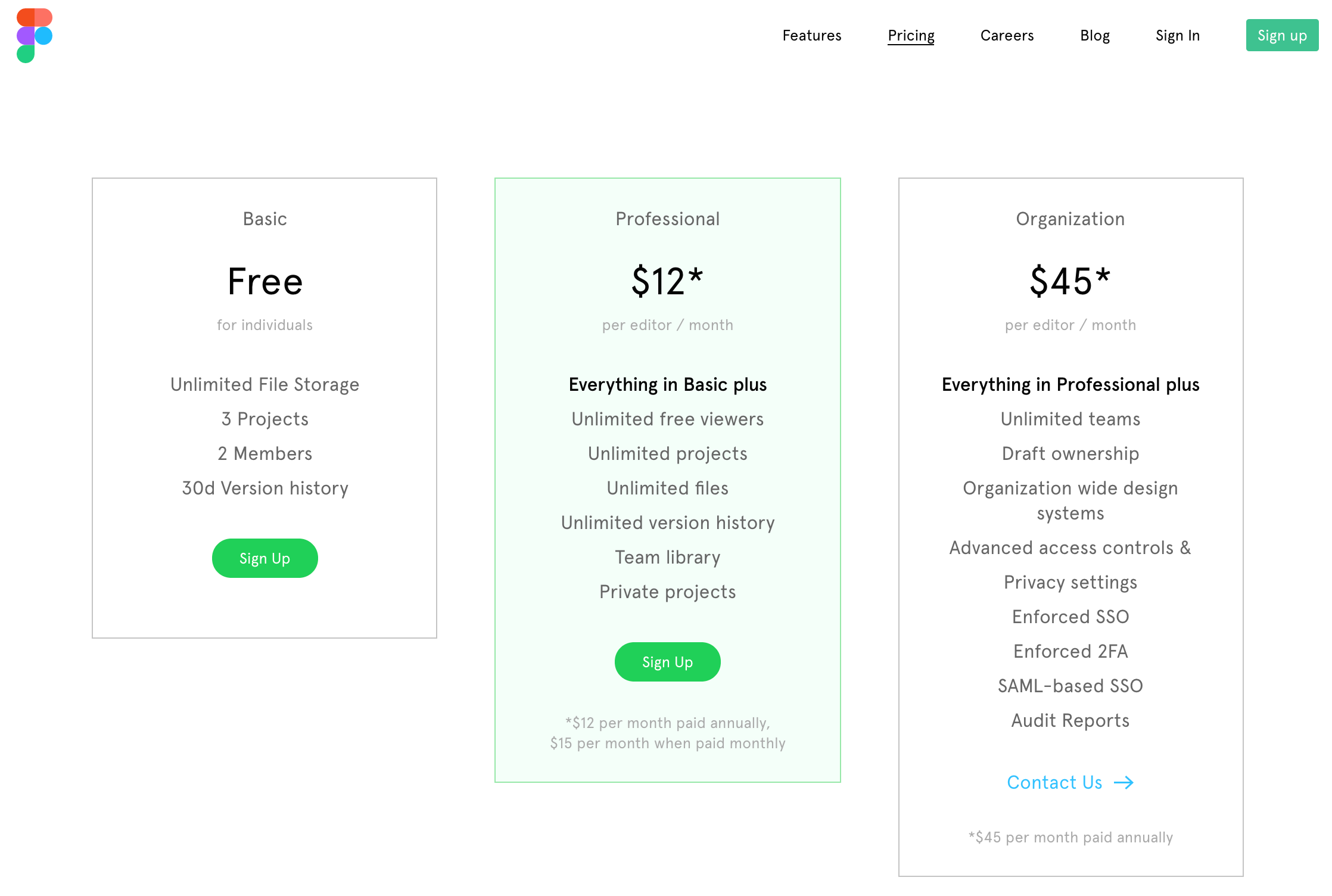 |
Slack
Initial strategy: Bottom-up, self-service
Eventual strategy: Bottom-up, alongside a sales team
How they charge today: Per-seat monthly subscription
Free tier: Freemium
“Slack launched a freemium plan from the start, including a self-serve paid plan. No sales to start, only self-service. They actually launched with roughly the same plans they have today, but with the Enterprise plan ‘coming soon’.
No inside sales at all, but relatively early on they did add some account execs to manage larger accounts, take invoicing, etc.”
— Fareed Mosavat, early growth PM
 |
Shopify
Initial strategy: Bottom-up, self-service with some founder-led sales
Eventual strategy: Bottom-up, alongside a sales team
How they charge today: Transaction fee
Free tier: Trial
“Shopify was percent-of-sale only for the first year (3.75%!). Totally didn’t work. We switched it to the now common 3-plan monthly SaaS pricing in 2007 or 2008.
That saved the company.”
— Tobi Lütke, CEO
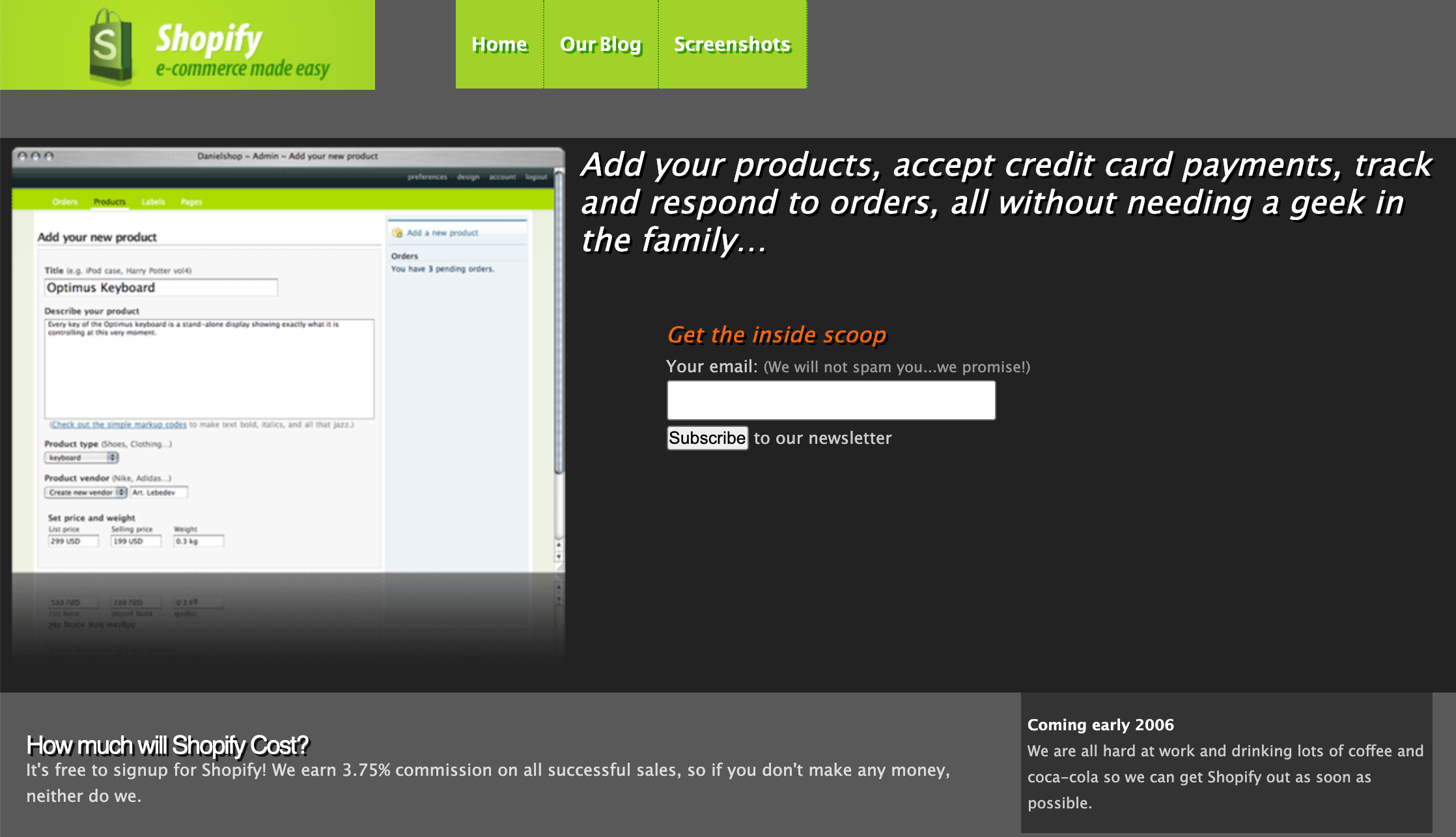 |
Stripe
Early growth strategy: Bottom-up, self-service with some founder-led sales
Eventual growth strategy: Bottom-up, alongside a sales team
How they charge today: Transaction fee
Free tier: None
“It very much spread through a word of mouth process. That was surprising to us because it’s a payment system not a social network so it’s not something you’d think would have any virality whatsoever. But it became clear that everything else was so bad and so painful to work with that people actually were selling this to their friends.”
— Patrick Collison, CEO (source)
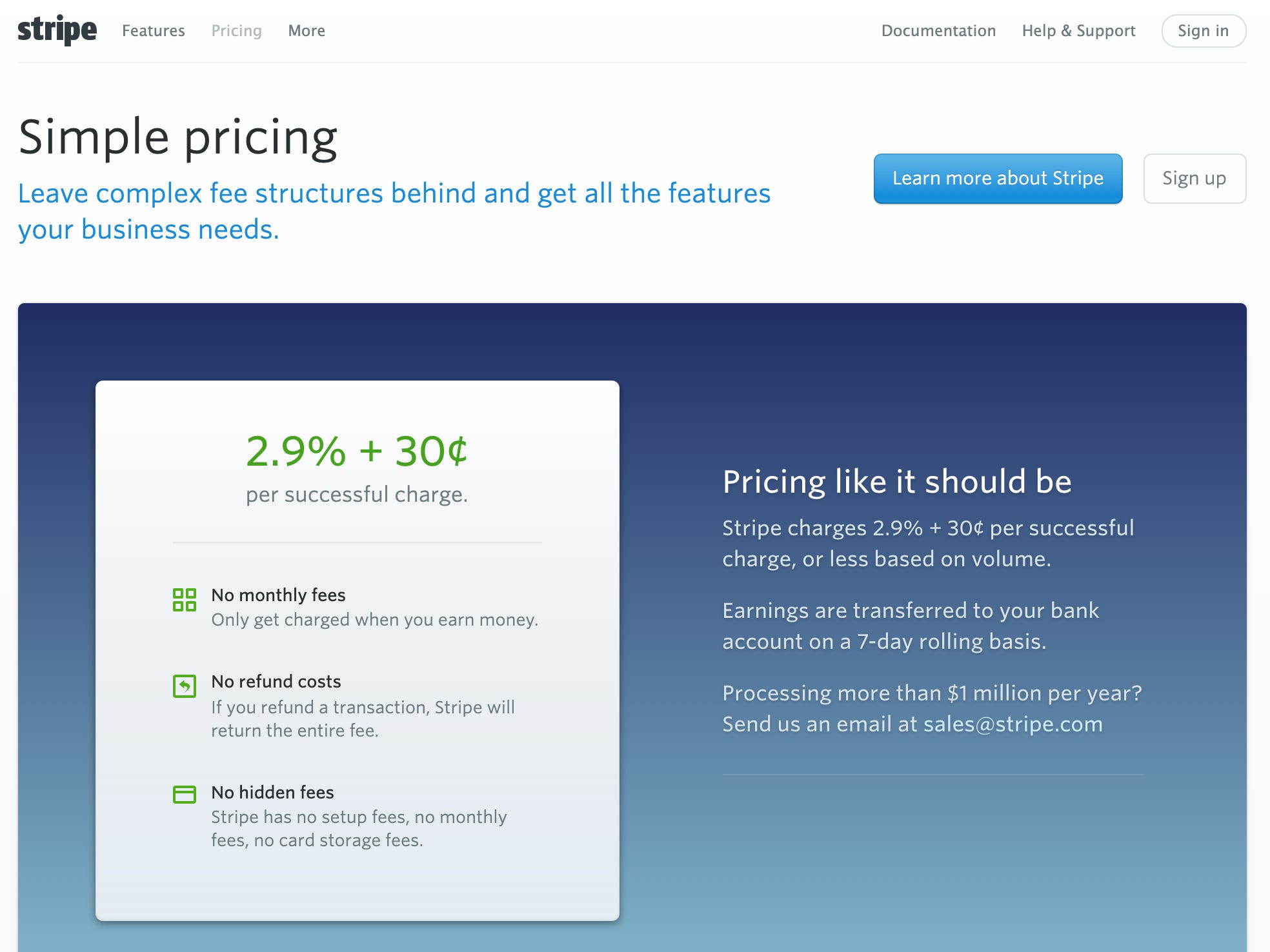 |
Atlassian
Initial strategy: Bottom-up, self-service with some founder-led sales
Eventual strategy: Bottom-up, alongside a sales team
How they charge today: Per-seat monthly subscription
Free tier: Freemium
“JIRA was paid from the very start. The only free carveout initially was non-profits, academics, and open source. So that helped seed, but it had to be paid commercially (using license keys, since back then it was 100% on premisis).”
— Early user
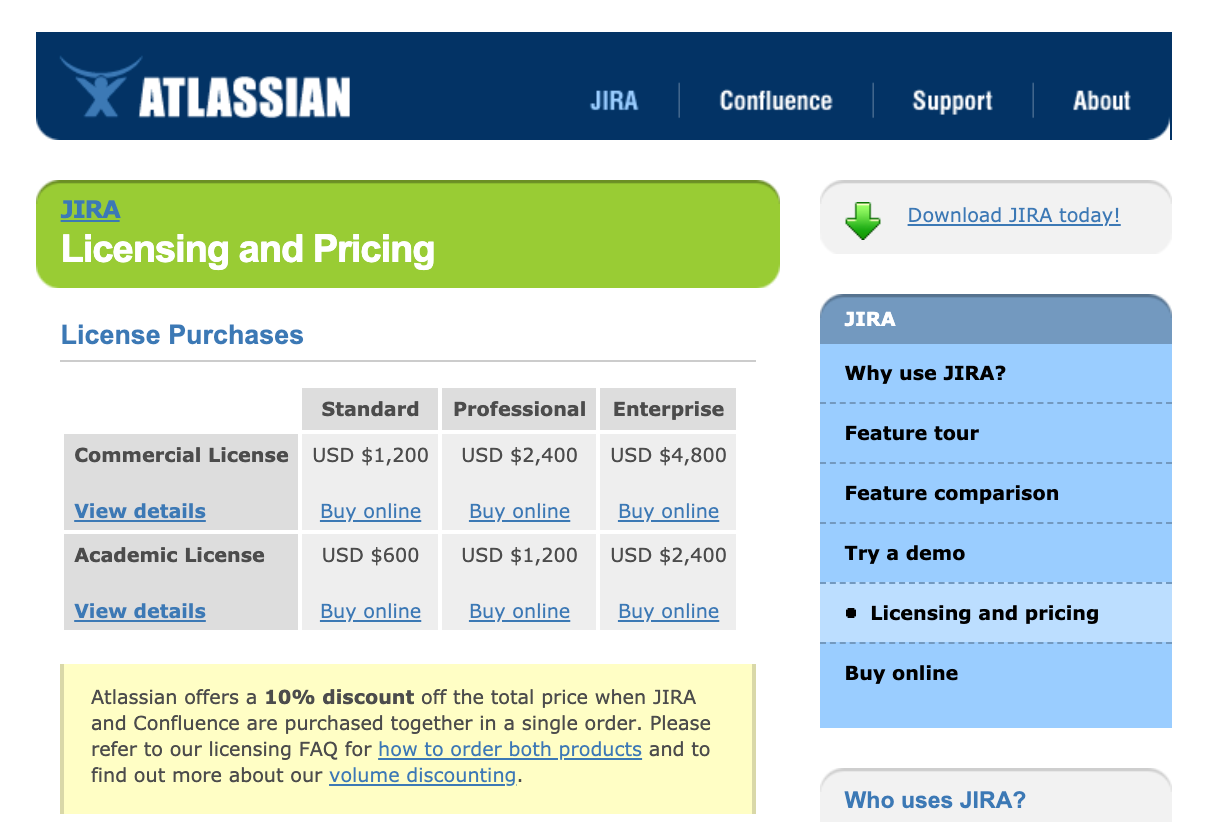 |
Canva
Initial strategy: Bottom-up, self-service
Eventual strategy: Bottom-up, with an inside sales team
How they charge today: Per-seat monthly subscription
Free tier: Freemium
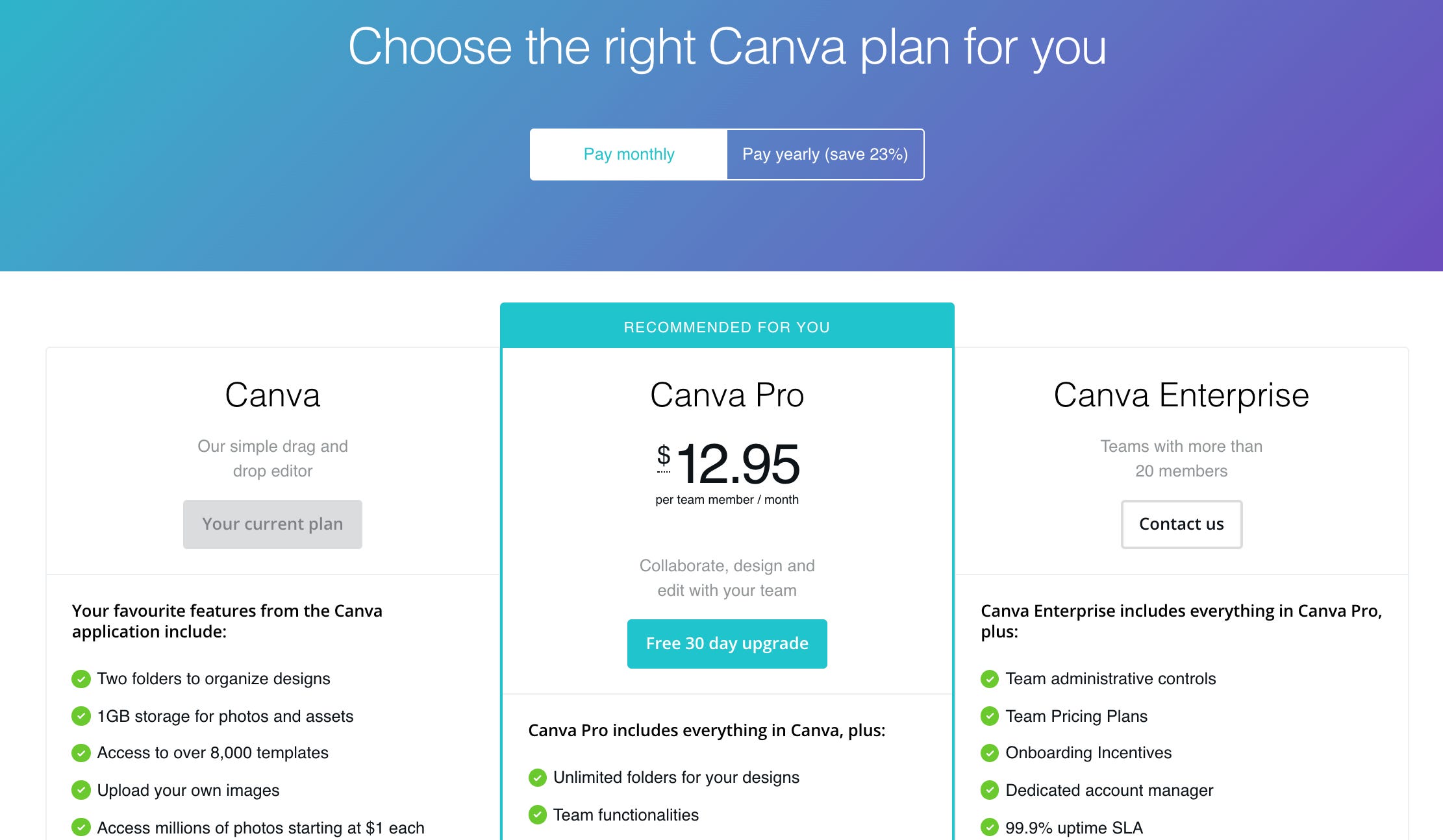 |
Twilio
Initial strategy: Bottom-up, self-service
Eventual strategy: Bottom-up, alongside a sales team
How they charge today: Usage-based
Free tier: Freemium
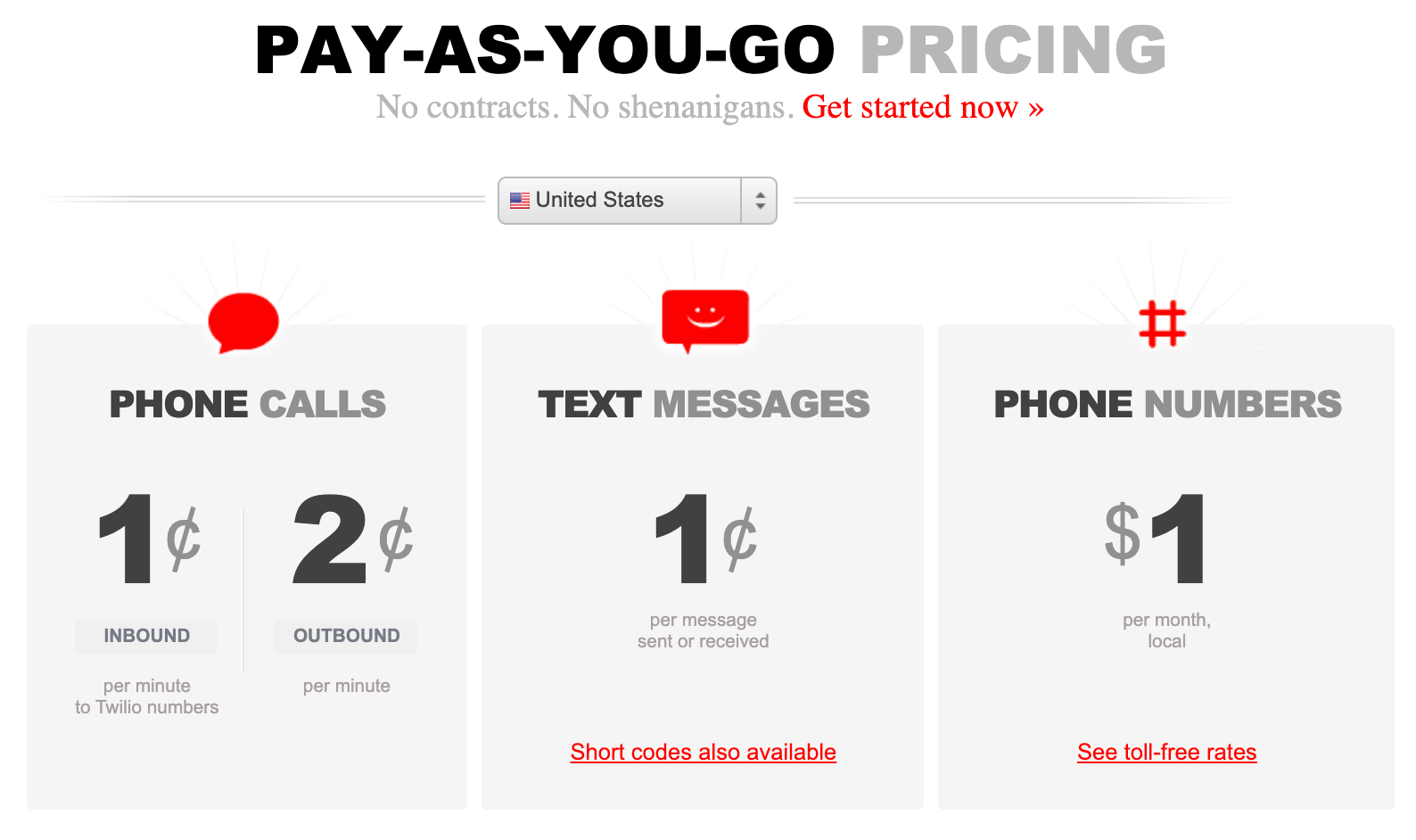 |
Plaid
Initial strategy: Bottom-up, self-service with some founder-led sales
Eventual strategy: Bottom-up, alongside a sales team
How they charge today: Usage-based
Free tier: Freemium
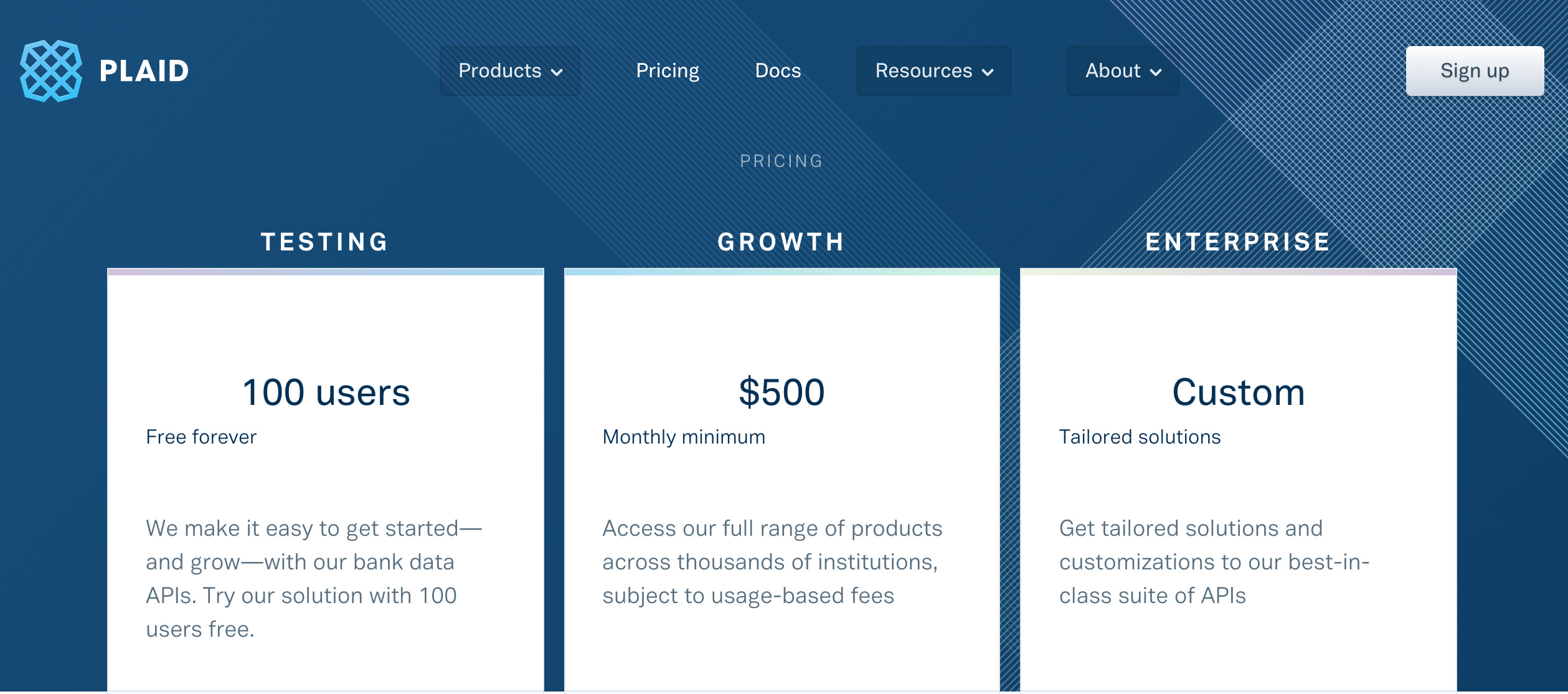 |
2. Bottom-up + support from inside sales
Dropbox
Initial strategy: Bottom-up self-service, with some help from inside sales
Eventual strategy: Bottom-up, alongside a sales team
How they charge today: Per-seat monthly subscription
Free tier: Freemium
“Our Dropbox for Teams coming out party started with a basic HTML landing page that was being hosted out of my Dropbox folder. It primarily highlighted our MVP features, like central billing, more storage, uncapped version control.
This was first put out in the wild using our very popular user forum, which was mostly comprised of our most vocal fans and evangelists. As you can imagine, awareness spread like wildfire after this.

